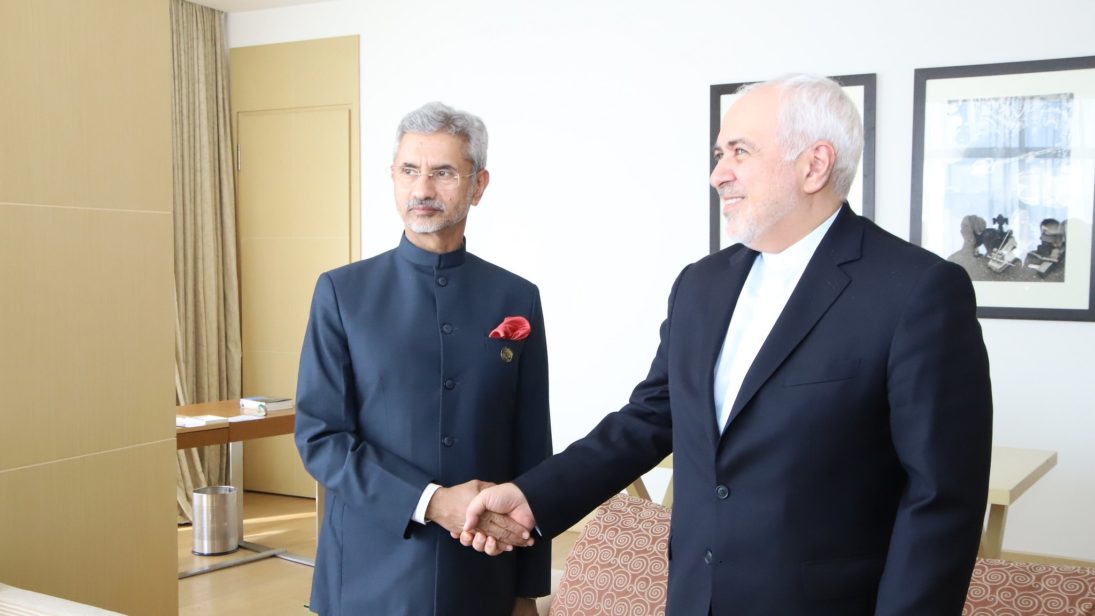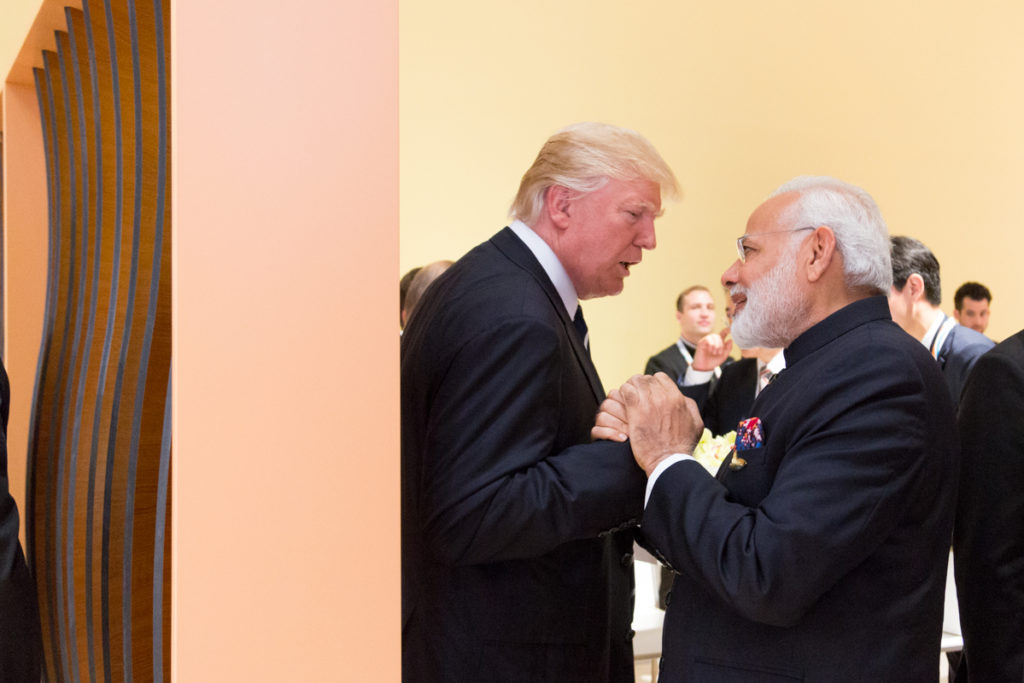
In May 2018, President Donald Trump decided to pull the United States out of the nuclear deal that the P5+1 nations had reached with Iran in July 2015 as per which Tehran would accept limits on its nuclear program in exchange for relief from economic sanctions. In November 2018, Washington reinstated sanctions on Tehran with the purpose of targeting it and states doing business with it. The sanctions were designed to hit the oil, shipping, and banking sectors of the Iranian economy, its main sources of revenue. However, India and seven other countries importing oil from Iran were granted a 180-day exemption by the Trump administration. In exchange, India agreed to cut oil imports from Iran by a third. But in April this year, the United States announced that this exemption would not be renewed, with the aim to “bring Iran’s oil exports to zero,” and threatened to impose sanctions on any state that continues to purchase oil from Iran. This latest U.S. decision poses a dilemma for India, since on the one hand, Iran is not only a major oil supplier but also a geopolitically important partner for New Delhi but on the other hand, New Delhi and Washington have a strategic partnership and robust defense cooperation. Thus, India cannot take sides in this evolving situation and balancing its energy interests with its broader foreign policy objectives is likely to be a challenge.
Extraneous Shocks to India-Iran Ties
India was the second-largest consumer of Iranian oil after China until at least mid-2018, importing about 10 percent of its total oil requirements from the country. Iranian oil contracts have traditionally been appealing to India since Iran offers a 60-day credit policy and free insurance and shipping, something no other oil supplier offers. Moreover, India saw Iran as a reasonably reliable supplier in the context of looming political uncertainty in other major oil producing states like Libya, Venezuela, and Sudan.
However, recent United States-Iran tensions have created complications for India. New Delhi, which imported around 480,000 barrels of oil per day from Tehran in the 2018-2019 fiscal year, was forced to give in to U.S. pressure and had to stop importing oil from Iran altogether in May this year. Amidst these tensions, Iranian foreign minister Javad Zarif visited New Delhi, his second trip this year, hoping to secure a deal with India, which had earlier stated that it only abides by UN sanctions and not those imposed by any particular country. During the visit, India informed Zarif that the decision to continue Iranian oil imports will be taken after the Indian elections and official sources were quoted by the media as saying that “commercial consideration, energy security and economic interests” will be taken into account in the decision. However, despite the swearing-in of the new government in late May, no decision to restart oil imports from Iran has yet been made. Reports suggest that clarity is likely to emerge only after Indo-U.S. discussions during Secretary of State Mike Pompeo’s visit to New Delhi later this month. However, to preserve the strong strategic relationship between New Delhi and Washington, India may accommodate U.S. demands on Iran, indicated by the fact that India’s reaction to the end of the U.S. waiver was quite muted.
Dealing with the Aftermath
Efforts to diversify its oil supply are designed to minimize the impact of disruptions caused by the Iranian situation but it is difficult for India to completely replace a large oil supplier like Iran. […] In addition, India’s interests in Iran are not just limited to oil – Iran offers India access to the markets of Central Asia and Afghanistan through Chabahar, without having to go via Pakistan.
As India prepares for life without Iranian oil, it is scouting for supplies from other countries to dampen the effects of U.S.-Iranian tensions on its domestic energy scenario. Although the oil market is fungible, knocking Iranian oil supplies off the market is likely to lead to a rise in global oil prices. Therefore, Indian Petroleum Minister Dharmendra Pradhan has said that India will receive crude oil from other countries to fill-in shortages created by halting Iranian oil imports, most likely from Saudi Arabia, the United Arab Emirates, Mexico, and the United States. Indian Oil, a state-owned energy company, is tying up with Saudi Arabia’s Aramco for 250,000 tonnes of crude supply per month and has also signed contracts with Norwegian and Algerian oil companies, Equinor ASA and Sonatrach respectively, for the supply of 4.6 million tonnes of oil in 2019-2020. Furthermore, India and China, Iran’s two biggest oil consumers, are also looking to strengthen their energy cooperation and have set up a joint working group to deal with the uncertainty in global energy markets. Moreover, India has been investing heavily in oil assets abroad for a while, putting in more than USD $38 billion to purchase stakes in 28 countries around the world. For instance, keeping recent troubles with Iranian supply in mind, India is eyeing Guyana’s oil fields, which are estimated to hold more than five billion barrels of oil.
Besides, India has some past experience in dealing with U.S. sanctions on Iran, having found itself in a similar situation in 2012-13. At that time, India had continued to purchase oil from Iran and opted to settle 45 percent of Iranian oil payments in rupees, using the state-owned UCO Bank, while the rest were paid in Euros. Similar arrangements could perhaps be made this time as well.
Such efforts to diversify its oil supply are designed to minimize the impact of disruptions caused by the Iranian situation but it is difficult for India to completely replace a large oil supplier like Iran. This is because except Saudi Arabia, no other supplier has spare capacity to make-up for the loss of Iranian oil in the short-term. In addition, India’s interests in Iran are not just limited to oil – Iran offers India access to the markets of Central Asia and Afghanistan through Chabahar, without having to go via Pakistan. In addition, maintaining ties with Tehran even as it forges a new relationship with Riyadh and Jerusalem is critical for New Delhi’s balancing policy in West Asia, since India is home to sizeable populations of both Shia and Sunni Muslims and seeks to isolate itself from any sectarian tensions in the region. Thus, India would do well to neither completely break off ties with Iran nor go against the United States outright.

Walking the Tightrope Between Washington and Tehran
India stopping Iranian oil imports at the behest of the United States needs to be understood in the context of finally getting Masood Azhar, chief of the Pakistan-based terrorist organization Jaish-e-Mohammed, listed as a global terrorist, thanks to U.S.-led efforts at the United Nations Security Council (UNSC). Washington explicitly conveyed that it expected reciprocity from New Delhi on stopping oil imports from Iran in exchange for this support at the UNSC.
One silver lining for India in the recent sanctions episode has been the exemption that the United States has granted to the Indian-built Chabahar port in Iran, due to the economic stability and strategic benefits it could bring for Afghanistan[…] Such issue-based cooperation can be the path forward for New Delhi to maximize its ties with both Tehran and Washington without getting embroiled in their bilateral tensions.
This balancing act by New Delhi is a familiar script in the India-Iran-United States triangular relationship. In the 2005 to 2009 period, when New Delhi was negotiating its own civilian nuclear deal with Washington, it voted against Iran twice at the International Atomic Energy Agency (IAEA). India also dropped plans for the Iran-Pakistan-India (IPI) gas pipeline in 2009, ostensibly under pressure from Washington. But on the other hand, India continued to purchase significant quantities of oil from Iran during this time. In fact, Indian state-owned oil companies were exploring the Farsi offshore block in the Persian Gulf around 2006-07 and found an estimated 10 trillion cubic feet of gas there. India also continued high-level engagement with Iran, such as when External Affairs Minister Pranab Mukherjee visited Iran in February 2007, reciprocating a visit from Iranian foreign minister Manouchehr Mottak in November 2006. Thus, lessons from the past can be instructive for New Delhi on how to navigate the complex environment of the present.
One silver lining for India in the recent sanctions episode has been the exemption that the United States has granted to the Indian-built Chabahar port in Iran, due to the economic stability and strategic benefits it could bring for Afghanistan and thus further U.S. objectives in the region. Such issue-based cooperation can be the path forward for New Delhi to maximize its ties with both Tehran and Washington without getting embroiled in their bilateral tensions.
Conclusion
In 2019, New Delhi seems to have weighed in favor of Indo-U.S. ties by deciding to halt oil imports from Iran. However, it will have to find a way, either by persuading Washington to grant an exemption or by circumventing U.S. sanctions like it did in 2012-13, to continue its relationship with Tehran in order to secure its energy supply and its regional foreign policy objectives. Stopping oil imports from Iran is neither good energy security strategy nor good geopolitics.
***
Image 1: MEA India via Flickr
Image 2: The White House via Flickr


